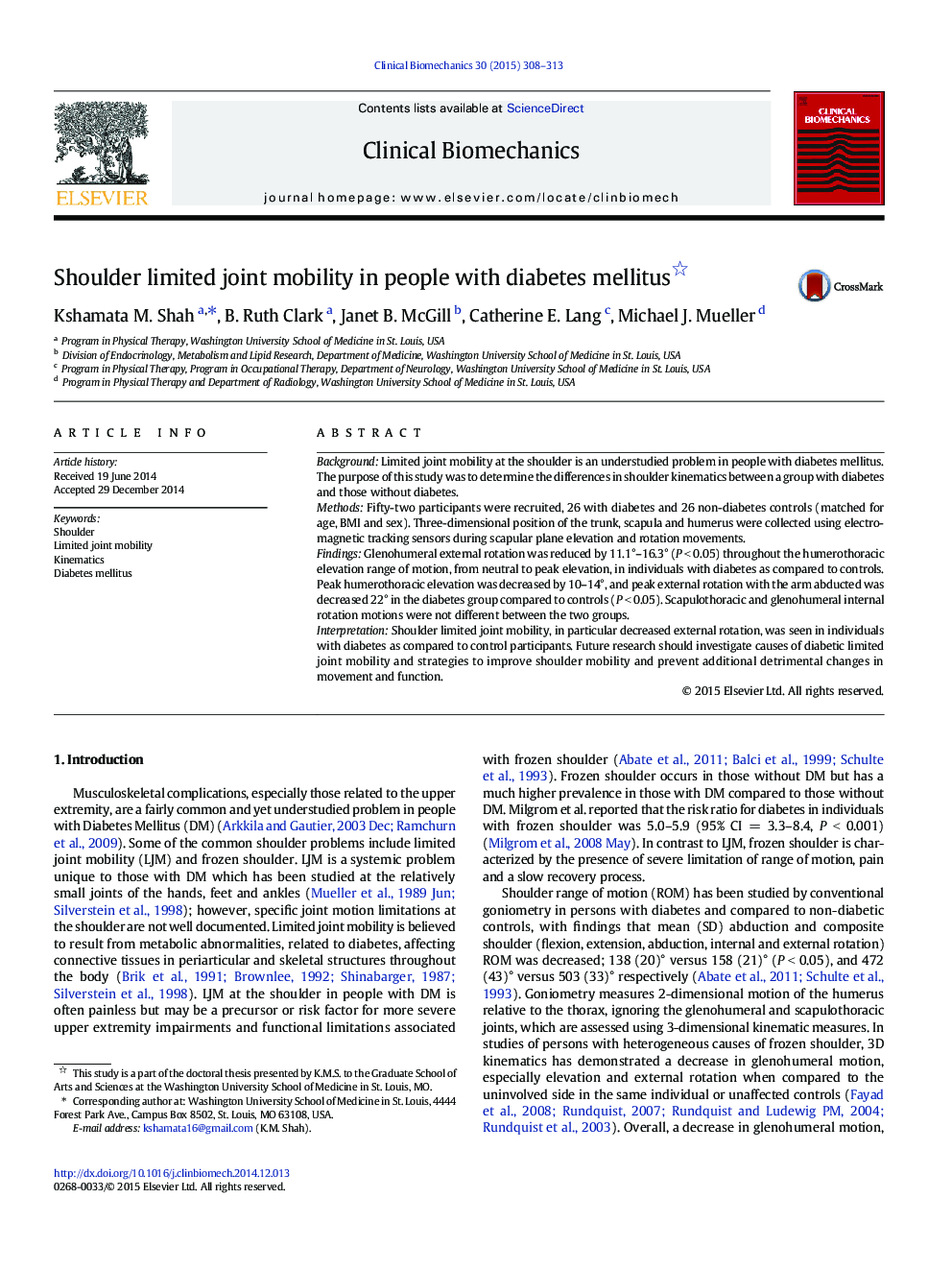| Article ID | Journal | Published Year | Pages | File Type |
|---|---|---|---|---|
| 6204734 | Clinical Biomechanics | 2015 | 6 Pages |
â¢We determine shoulder limited joint mobility in people with diabetes compared to controls.â¢Glenohumeral external rotation and peak humerothoracic elevation were reduced.â¢Scapulothoracic upward rotation was not different between two groups.â¢Shoulder limited joint mobility was also seen in diabetes sub-group with no pain.
BackgroundLimited joint mobility at the shoulder is an understudied problem in people with diabetes mellitus. The purpose of this study was to determine the differences in shoulder kinematics between a group with diabetes and those without diabetes.MethodsFifty-two participants were recruited, 26 with diabetes and 26 non-diabetes controls (matched for age, BMI and sex). Three-dimensional position of the trunk, scapula and humerus were collected using electromagnetic tracking sensors during scapular plane elevation and rotation movements.FindingsGlenohumeral external rotation was reduced by 11.1°-16.3° (P < 0.05) throughout the humerothoracic elevation range of motion, from neutral to peak elevation, in individuals with diabetes as compared to controls. Peak humerothoracic elevation was decreased by 10-14°, and peak external rotation with the arm abducted was decreased 22° in the diabetes group compared to controls (P < 0.05). Scapulothoracic and glenohumeral internal rotation motions were not different between the two groups.InterpretationShoulder limited joint mobility, in particular decreased external rotation, was seen in individuals with diabetes as compared to control participants. Future research should investigate causes of diabetic limited joint mobility and strategies to improve shoulder mobility and prevent additional detrimental changes in movement and function.
